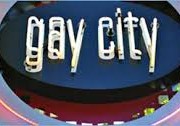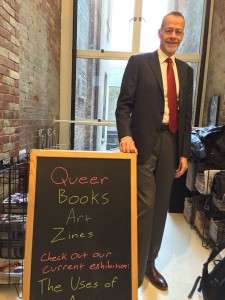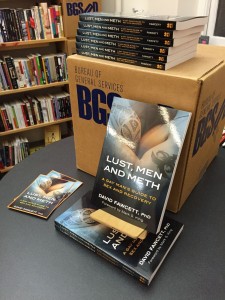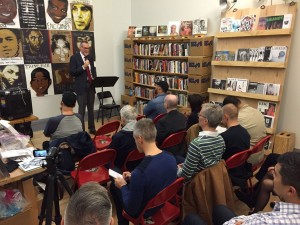David Fawcett, PhD, LCSW

Albert, a gay man, came back to my psychotherapy office for the first time in three months. He looked thinner, pale, and depressed. He was still on a significant amount of pain medications after suffering three painful rectal surgeries in an attempt to treat aggressive anal cancer. His prognosis remained uncertain and he was tired and discouraged.
Albert is also not alone. There is a largely-unrecognized epidemic of gay men, many also HIV positive, coming down with anal cancer. Several of my own clients have been diagnosed and I hear of other cases with disturbing frequency.
Anal cancer is caused by exposure to HPV (Human Papillomavirus) and can usually be successfully treated when discovered early. While there is no definitive diagnostic test, a simple annual screening with a Pap smear can be highly effective at finding cellular irregularities before they become cancer. Even gay-friendly physicians often don’t think to offer a Pap, and gay men don’t know to ask for one. This needs to change.
What is HPV?
HPV is the most common sexually transmitted infection. At least half of all sexually active individuals get HPV at some time in their lives. These infections frequently create no symptoms and resolve on their own, but a few of the more than 40 types of HPV can have serious and even fatal consequences. Some strains cause cervical and anal cancers; others cause genital warts.
How common is HPV among gay men?
One study reported that 95% of gay men with HIV also have HPV, and 60% of HIV-negative men have HPV. Gay and bisexual men are 17 times more likely to develop anal cancer than heterosexual men.
How is it contracted?
HPV is contracted skin-to-skin – no penetration is required. This can include genital to genital contact, touching someone else’s genitals and then your own; sharing sex toys, and (rarely) oral sex. Condoms offer minimal protection but some risk remains because of exposed skin.
What can go wrong if I am exposed to HPV?
Cervical cancer in women is the best-researched consequence of HPV, but the virus can also result in significant, lesser- known concerns for gay men. The same HPV strains that cause cervical cancer in women can cause anal cancer (and rarely penile cancer) in men. Gay men who practice receptive anal intercourse are at high risk; if they are HIV positive they have even higher risk. If undetected, anal cancer is very dangerous. In HIV positive men its progression appears unrelated to taking antivirals, length of time since HIV diagnosis, or CD4 counts. It is treated with advanced forms of radiation, chemotherapy, and surgery, although a combined UK/US study found survival rates of just 66% for the first year which declined thereafter.
Another, less virulent consequence of exposure to HPV is genital warts. These are highly contagious and caused by an HPV strain that doesn’t lead to cancer. They need to be treated by freezing with liquid nitrogen, cauterizing, or surgically removing them.
What about Prevention?
An HPV vaccine called Gardasil, shown to prevent cervical cancer and genital warts, has been introduced and approved only for girls ages 9-26. It protects against four types of HPV, including the two that cause 70% of cervical cancer. It is administered in three shots and is usually not covered by insurance (cost around $300). The vaccine will not offer protection for prior exposure to specific strains, although studies indicate it might slow progression of warts or cancer. The vaccine is not approved for men although (finally!) there are studies underway to test its safety and efficacy in men.
We don’t have to wait for the vaccine. There is an easy and effective screening tool that every sexually active gay man should have every year: a Pap test (also known as a Pap smear). This can detect abnormal cells that could become cancer and which can be removed. The CDC doesn’t recommended Pap tests for men because there is not yet enough data on how HPV leads to cancer in men, although other leading gay men’s health organizations such as Fenway in Boston recommend annual Pap test screening.
If a Pap test is negative you’re in good shape. If it’s positive your doctor will conduct a biopsy, remove suspicious cells with a laser, and monitor through regular follow up.
As gay men we need to take charge of our health care. Ask your doctor about a Pap test – if you detect surprise at the question you may need to evaluate how knowledgeable he or she is about gay men’s health.
 .
.









